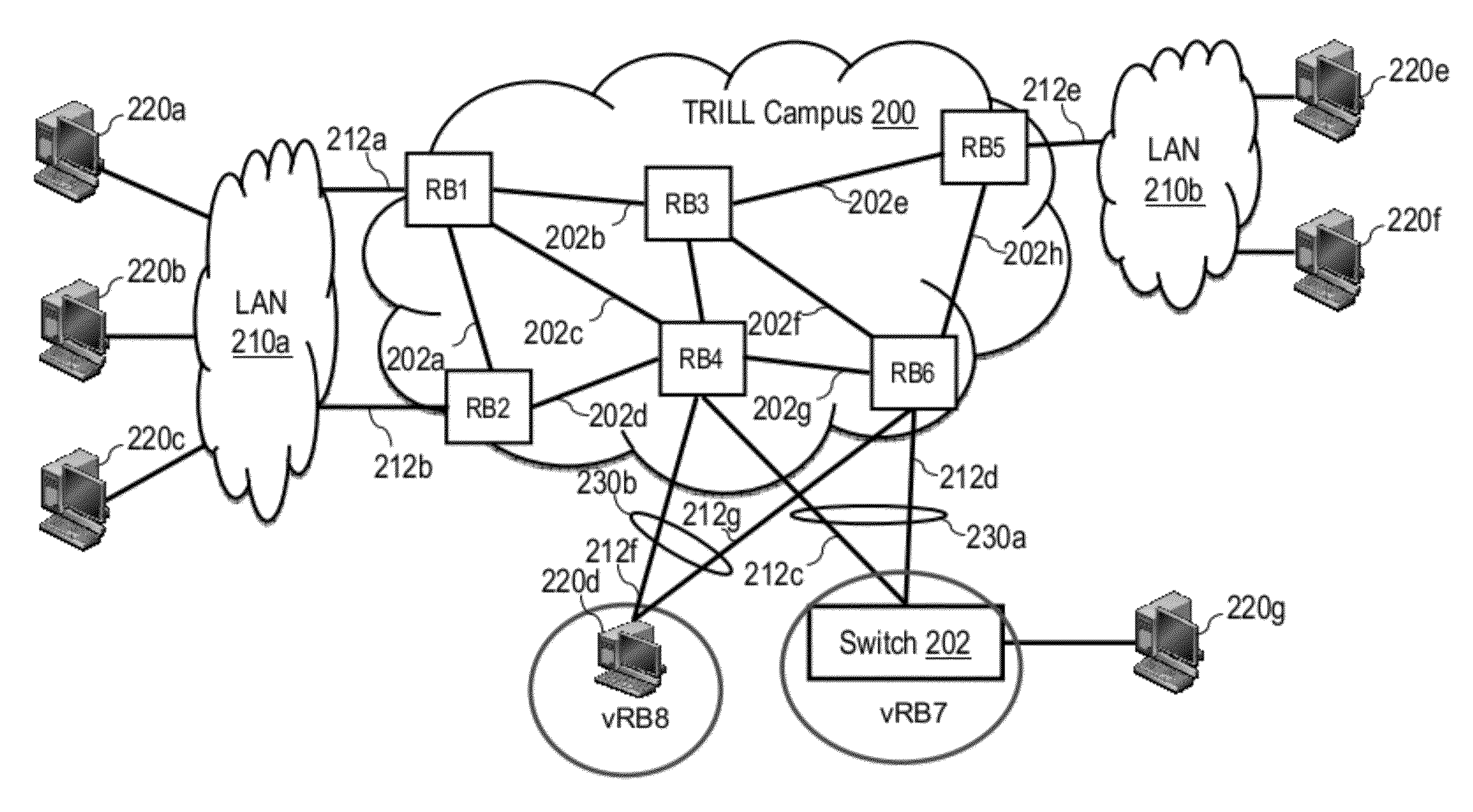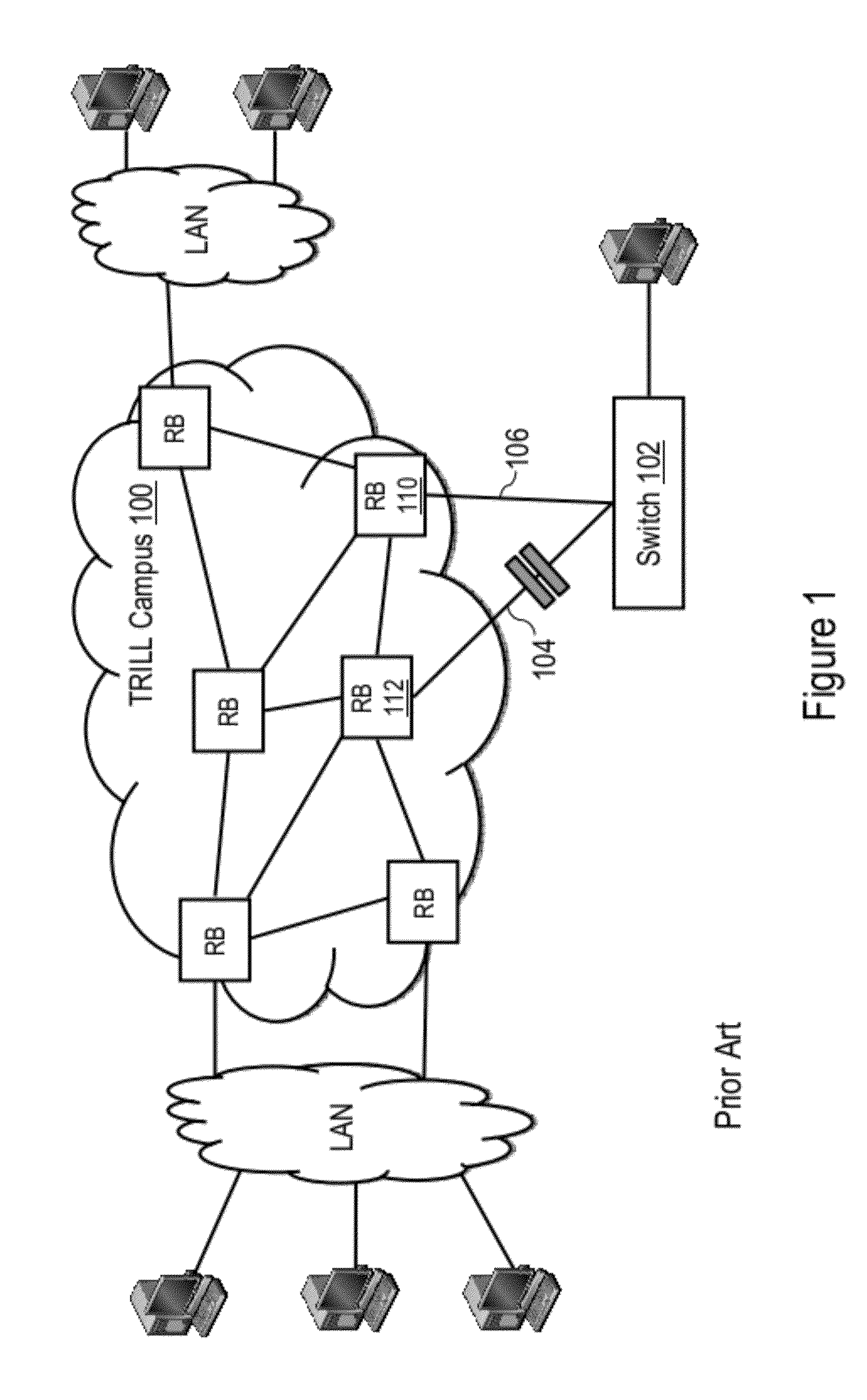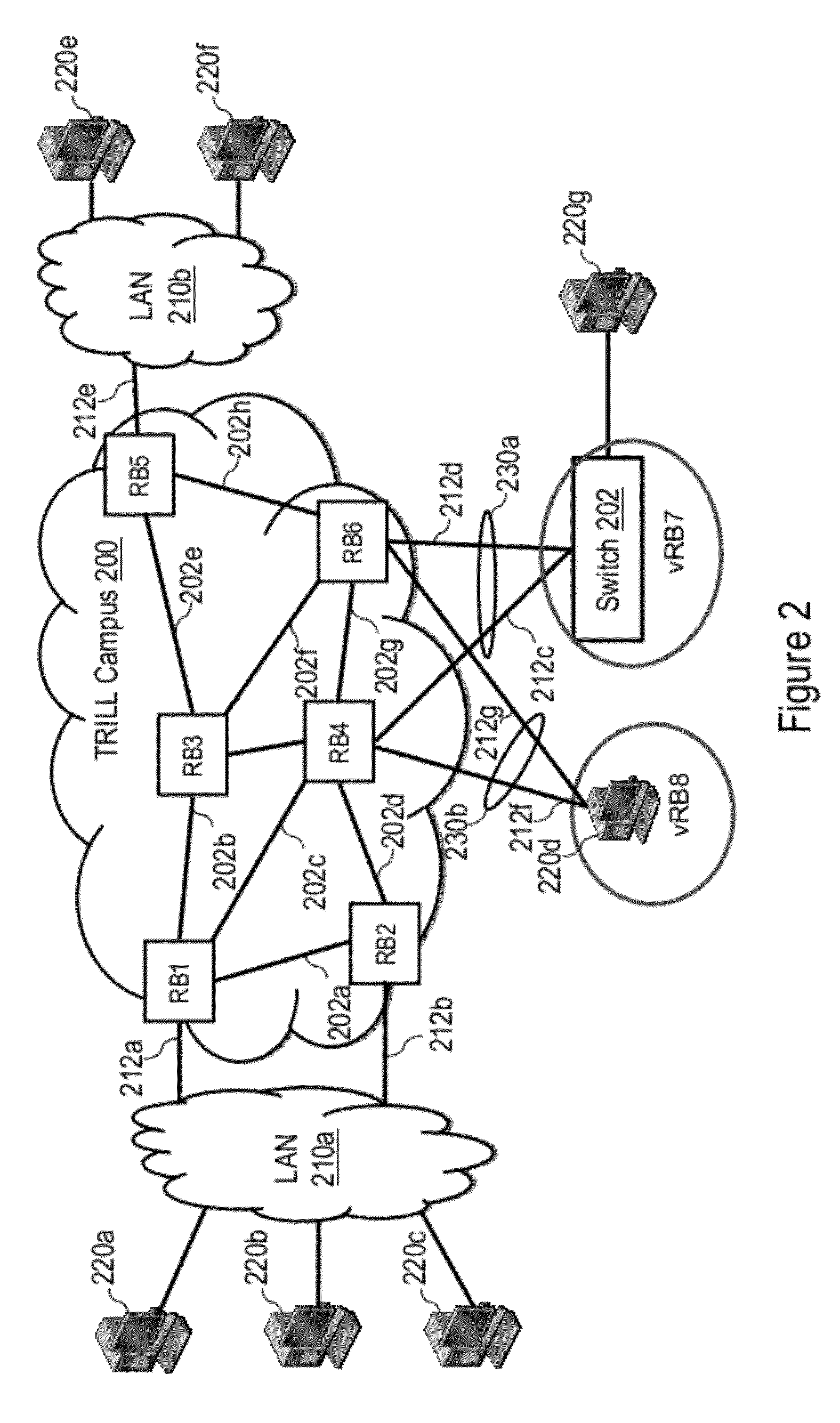Mac Learning in a Trill Network
a trill network and learning technology, applied in the field of data networks, can solve the problems of limiting flexibility, reducing the bandwidth of aggregate network, and inefficiently using it,
- Summary
- Abstract
- Description
- Claims
- Application Information
AI Technical Summary
Problems solved by technology
Method used
Image
Examples
Embodiment Construction
[0042]The present application describes mechanisms and associated methodologies, referred to herein as TRILL LAG or t-LAG, that facilitate the connection of network nodes (e.g., servers and / or switches) external to a TRILL campus in a Link Aggregation Group (LAG) through the use of a virtual routing bridge (virtual-RB). Multiple t-LAGs may additionally be hosted by a set of multiple physical switches, herein referred to as a t-LAG cluster, with all t-LAGs in a given t-LAG cluster preferably (but not necessarily) sharing the same virtual-RB. The use of the virtual-RB for the t-LAGs can resolve load distribution for unicast (UC) traffic. For multidestination (e.g., multicast (MC), broadcast (BC), destination lookup fail (DLF)) traffic, different mechanisms are employed to ensure traffic is properly delivered to a peer RB of a t-LAG cluster; otherwise, either more than one copy of a multidestination frame may be sent to the same destination or a frame may be erroneously returned to an ...
PUM
 Login to View More
Login to View More Abstract
Description
Claims
Application Information
 Login to View More
Login to View More - R&D
- Intellectual Property
- Life Sciences
- Materials
- Tech Scout
- Unparalleled Data Quality
- Higher Quality Content
- 60% Fewer Hallucinations
Browse by: Latest US Patents, China's latest patents, Technical Efficacy Thesaurus, Application Domain, Technology Topic, Popular Technical Reports.
© 2025 PatSnap. All rights reserved.Legal|Privacy policy|Modern Slavery Act Transparency Statement|Sitemap|About US| Contact US: help@patsnap.com



